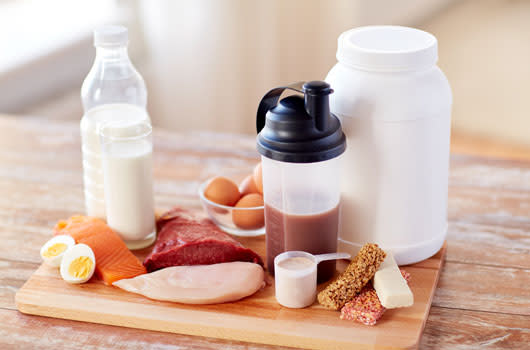Why is maintaining muscle mass so important?
Why is maintaining muscle mass so important?

Every day we’re losing muscle mass from degradation, but also we’re also replenishing it by building new muscle tissue with amino acids, which are the basic building blocks that come from the protein we ingest. When we’re young, this balance is perfect. But as we age, the rate at which we lose muscle is significantly faster and our ability to build new muscle is somewhat less effective.
This means that we tend to lose muscle mass and strength overall as we age. This is called age related ‘sarcopenia’. It is not a disease but a natural part of ageing.
If unchecked, this can eventually lead to frailty in older age, as our muscle mass and strength reduce radically and typically this goes hand in hand with an increase in fat mass.
How to avoid losing muscle mass

Age related muscle loss starts at around the age of 45 and accelerates as we age, resulting in around 1% loss per year, accelerating to 3% later on in life. This means we could easily lose 25% of our muscle mass and the strength that goes along with it, by the time we reach 65. In essence, our muscles are in a state of flux and are being remodelled constantly.
The good news is that we can do something about sarcopenia. All it takes is a little effort in the form of exercise (preferably resistance exercise) combined with a higher intake of high quality protein, preferably dairy or animal protein. This type of protein contains the richest and highest quality source of essential amino acids, which have been proven to be the most effective for ageing muscle health, in many international scientific studies.
This might pose more of a challenge for vegetarians and vegans but it’s not impossible. Foods such as lentils, pulses, soy-based foods, tofu and plant-based meat alternatives can all be used to incorporate more protein into a meat-free diet.

